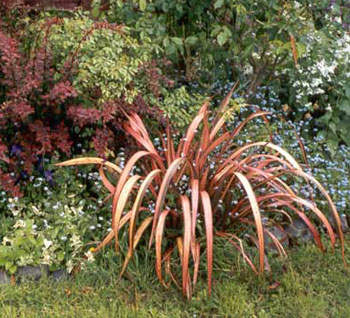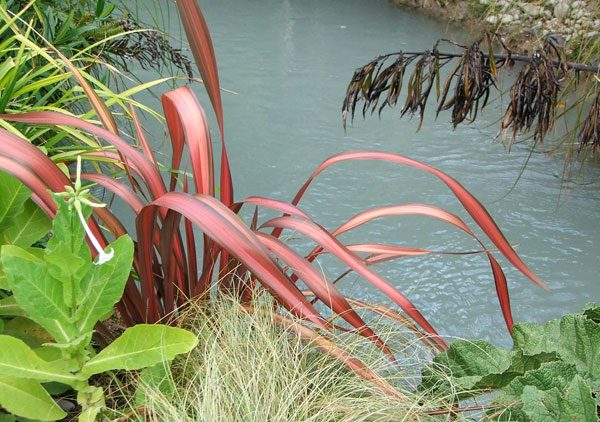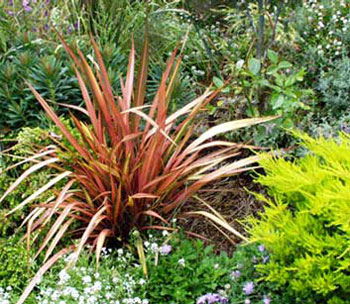The Story of the Little Red Flax
In all my early garden borders there would be at least one little red flax, or Phormium hybrid. They would brighten up the winter days, and were supposed to stay neat and beautiful throughout the other seasons. This meant that they were supposed to stay red, and stay little.
My little red flaxes would glow with sunset colours when in sunshine. The garden in this archive photograph is Jeremy's memorial garden border by the front of the house. You can clearly see its resident little red flax.
But Then...
After three or four years things started to go terribly wrong. Many of my so-called 'little red flaxes' started seriously misbehaving. And as for their name - two things were very wrong. Firstly, the word 'red'.

Little Red Flax - 1999
Not Red
The flax pictured above in Jeremy's garden got the colour sulks, and its new leaves appeared in all sorts of non-red shades. Then large chunks of it valiantly tried to revert to the olive green of the species. Eventually, not a blade of red! Hmm...
And Not Little
The word 'little' was also quite interesting. I couldn't believe that the original flaxes ware ever 'little', or that I'd expected them to remain so. How presumptuous!
They quickly became person-sized, far too bulky for their positions. Obviously, like a puppy who grows into a large lumbering dog, they lost all their original cuteness. They became garden nuisances.
Progress? Hmm... Nearly all the original little red flaxes (which I thought were the variety Maori Maiden or Maori Chief) outgrew their respective garden spots. So some were brutally dug out, others given the 'slash-and-trim right to ground-level and see what happens next' treatment. The best laid plans of Head Gardeners can certainly go wrong...

Phormium by the Water
It's actually common for Phormium hybrids to lose their colour as they grow new leaves. Many just can't resist the temptation to revert to their original colour and form.
A Happy Ending...
But this story does have a happy ending. The nurseries always seem to have replacements, which are red, and little, to carry on the tradition!
